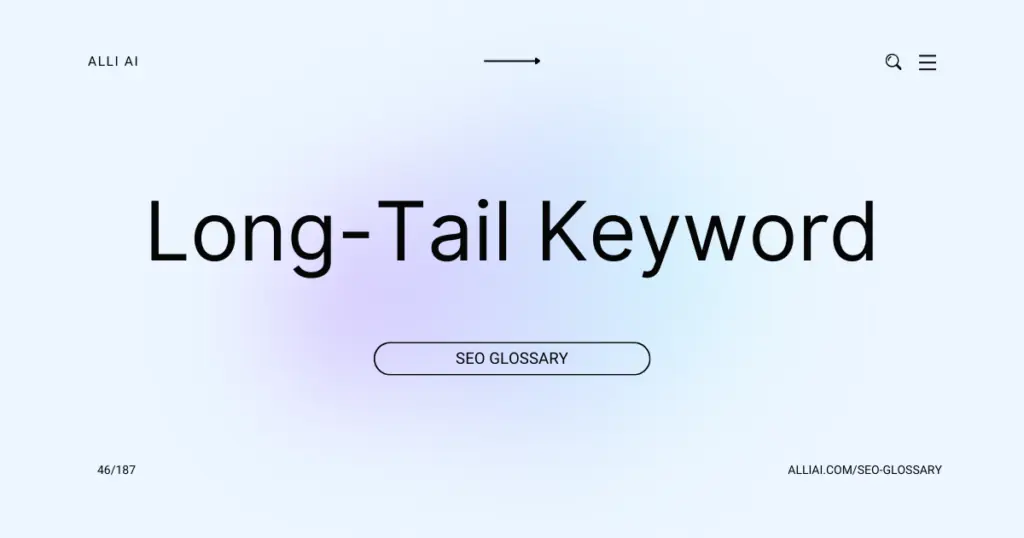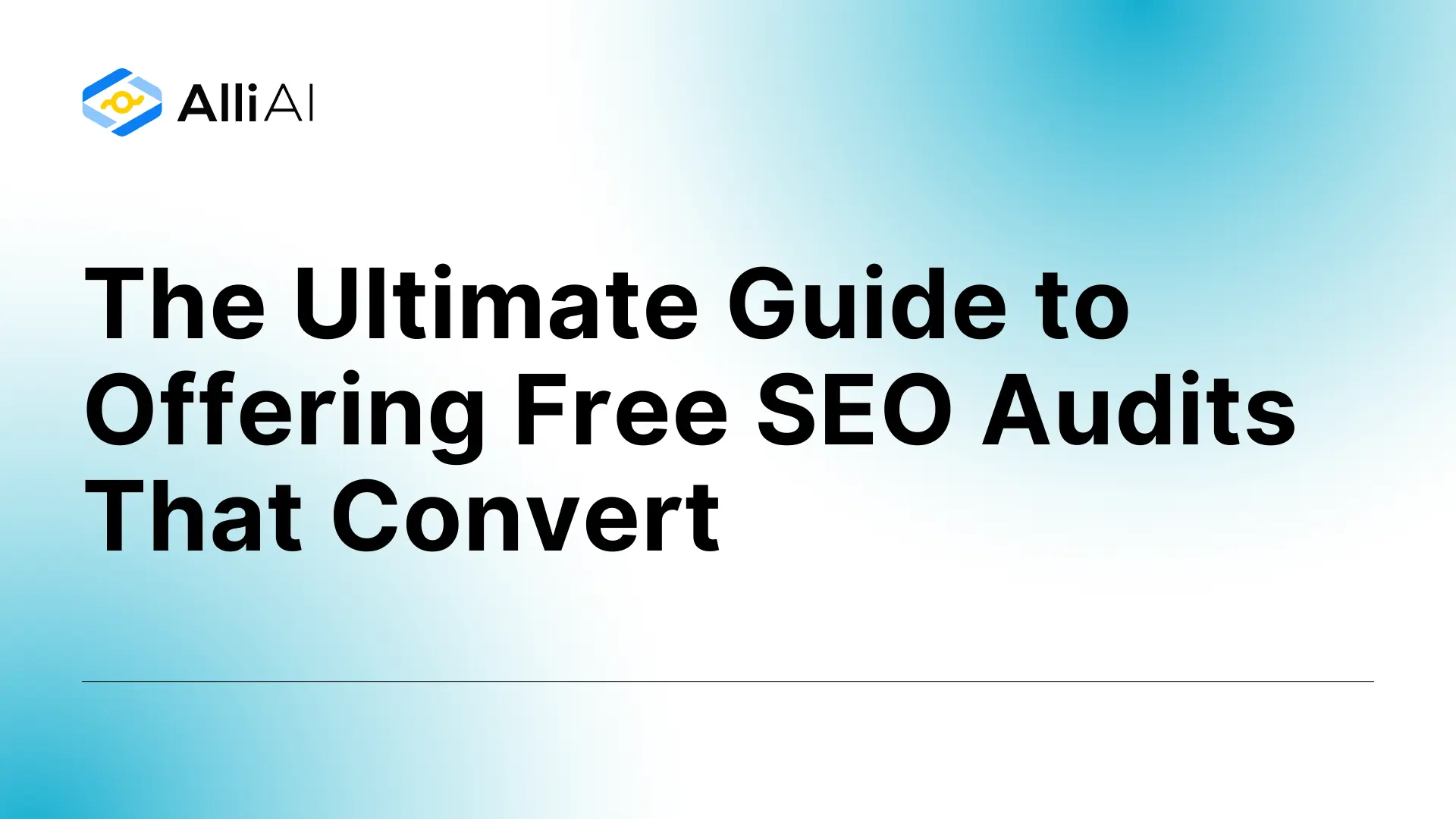What Does Long-Tail Keyword Mean?
A long-tail keyword is a longer and more specific keyword phrase that visitors are more likely to use when they’re closer to a point-of-purchase or when they’re using voice search. These keywords are usually three or more words long and are highly specific, making them easier to rank for in search engines and often leading to higher conversion rates as they target niche demographics.
Where Does Long-Tail Keyword Fit Into The Broader SEO Landscape?
Long-tail keywords are specific, niche phrases with lower search volume and competition but higher conversion rates compared to more generic terms. In the broader SEO landscape, they are crucial for targeting more precise user intents and capturing traffic from users who are further along in the buying process. Since these keywords are more specific, they allow websites to tailor their content better to meet the exact needs of their audience, enhancing relevancy and improving user experience. This specificity helps to boost organic search visibility and ranking for particular niches, thereby combating the competition from larger websites that generally dominate more common, shorter keywords. Additionally, long-tail keywords are integral for voice search optimization, as they closely resemble the natural language queries used in speaking devices. They also play a significant role in content strategy, enabling content creators to focus on creating detailed, high-quality content targeted at very specific audience segments.
Real Life Analogies or Metaphors to Explain Long-Tail Keyword
A long-tail keyword is like fishing with a specialized lure designed to catch a very specific type of fish in a vast ocean. While you may not get as many bites as with a generic lure, the ones you do attract are exactly what you’re looking for.
Alternatively, think of a long-tail keyword as a sniper rifle in the vast battlefield of internet marketing. Rather than spraying bullets everywhere with a machine gun (broad keywords), you meticulously aim and hit a specific target from a distance, ensuring a higher chance of hitting your ideal customer directly.
How the Long-Tail Keyword Functions or is Implemented?
1. Identification: Determine topics relevant to the business or content strategy. Utilize tools like Google Keyword Planner, Ahrefs, or SEMrush to identify long-tail keywords which are usually more than three words long.
2. Analysis of Search Intent: Understand the intent behind the keywords – informational, transactional, navigational, or commercial. This guides content creation to match user expectations and needs.
3. Competitor Analysis: Check what keywords competitors are ranking for and the type of content they are creating. This can highlight gaps or opportunities for targeting unique long-tail keywords.
4. Content Creation: Develop high-quality, relevant content that addresses the long-tail keywords. The content should directly answer the queries associated with those keywords.
5. On-Page SEO Optimization: Include the long-tail keyword in important on-page elements like the title tag, headers, meta description, and throughout the content naturally.
6. Content Siloing and Internal Linking: Organize content in a structured way on the site, linking related content through internal links with appropriate anchor texts to strengthen topic relevance and assist with site navigation.
7. Content Promotion: Share content through social media, email marketing, or other platforms to drive traffic and generate backlinks, which further supports the SEO effort.
8. Performance Tracking: Use tools like Google Analytics and Google Search Console to track how the targeted long-tail keywords perform in terms of rankings, traffic, and conversions. Adjust strategies as necessary based on performance metrics.
9. Continuous Optimization: Refine and update content over time to keep it relevant and improve or maintain rankings, adapting to SEO trends and algorithm updates.
Impact Long-Tail Keyword has on SEO
Long-tail keywords, typically more specific and longer than traditional keywords, significantly impact SEO by targeting niche demographics and reducing competition. These keywords often have a higher conversion rate as they capture users further along in the buying cycle who have more specific search intents. Utilizing long-tail keywords helps websites rank more easily in search engine results pages (SERPs) due to less competition and more targeted content, improving organic search visibility. They also enhance user experience by providing more precise, relevant content, which can decrease bounce rates and increase time on site. Additionally, they contribute to a more varied keyword strategy, complementing broader keywords and fostering a more comprehensive SEO approach. This strategy can lead to improved overall rankings across a broader set of keywords and topics.
SEO Best Practices For Long-Tail Keyword
1. Keyword Research
– Use tools like Google Keyword Planner, SEMrush, or Ahrefs to research variations and related phrases.
– Analyze search volume, competitiveness, and relevance of the long-tail keyword.
2. Create High-Quality Content
– Develop content that specifically addresses the topic indicated by the long-tail keyword.
– Ensure the content provides in-depth, valuable information or solutions related to the keyword.
3. Keyword Placement
– Include the long-tail keyword in the title tag, preferably towards the beginning.
– Use the keyword in the meta description to improve click-through rates from search engine results pages.
– Incorporate the keyword naturally within the first 100 words of the content.
– Use the keyword in at least one subheading (e.g., H2 or H3).
4. Optimize Page URLs
– Include the long-tail keyword in the URL slug in a concise manner.
5. Internal Linking
– Create internal links to this content from other relevant pages within your site using the long-tail keyword as anchor text.
6. Image Optimization
– Use images related to the keyword topic and include the long-tail keyword in the alt text of images.
7. User Engagement
– Structure the content to engage users, reducing bounce rates and increasing time spent on the page.
– Add calls-to-action (CTAs) to encourage interactions or deeper navigation into your site.
8. Mobile Optimization
– Ensure the page is mobile-friendly with responsive design and quick load times.
9. Speed Optimization
– Optimize page speed for faster loading by compressing images, leveraging browser caching, and minimizing JavaScript and CSS.
10. Schema Markup
– Implement schema markup to help search engines understand the content’s context.
11. Social Sharing
– Incorporate social sharing buttons to increase visibility and engagement.
12. Track Performance
– Use Google Analytics and Google Search Console to monitor the performance of your content.
– Regularly review and adapt based on performance metrics such as click-through rate, bounce rate, and rankings.
Common Mistakes To Avoid
1. Identify the primary keyword or key phrase for the webpage based on your content and audience’s search intent.
2. Include the primary keyword towards the beginning of the meta description to ensure visibility.
3. Integrate secondary keywords naturally, if space permits, to broaden SEO impact without stuffing.
4. Keep the meta description length between 150-160 characters to avoid truncation in search engine results.
5. Clearly state what the webpage is about and match the content of the page accurately to meet user expectations.
6. Use action-oriented language to encourage clicks, incorporating verbs like “discover,” “learn,” and “get.”
7. Highlight a unique value proposition or what makes the webpage stand out, such as “free shipping” or “expert advice.”
8. Ensure the tone and style align with your brand’s voice and the rest of the website content.
9. Use numbers or statistics if applicable, as they can attract more attention and offer concrete details.
10. Ensure each meta description is unique across the website to avoid duplicate content issues.
11. Test and revise the meta descriptions based on performance metrics like click-through rate (CTR) from Web Analytics tools.






